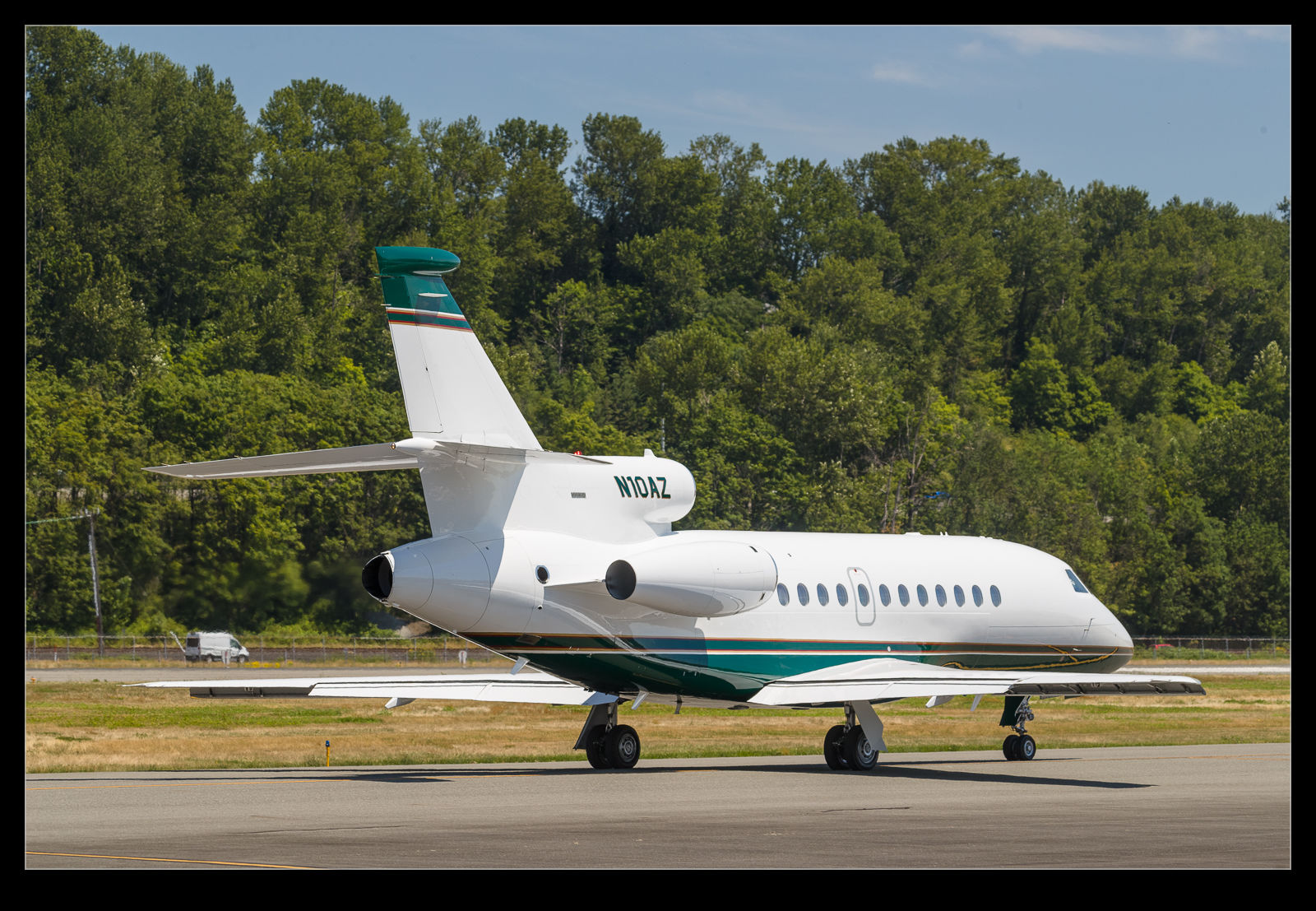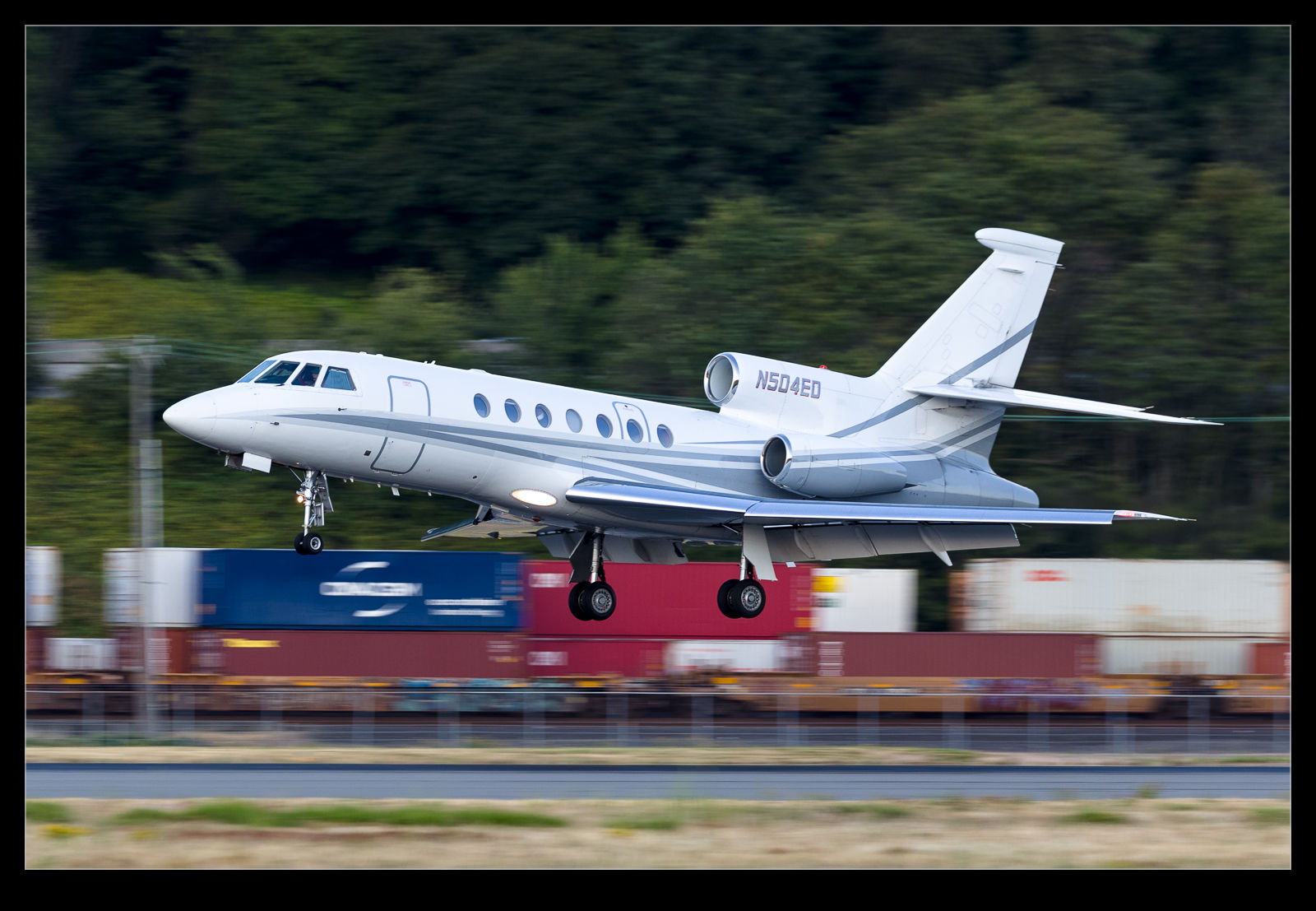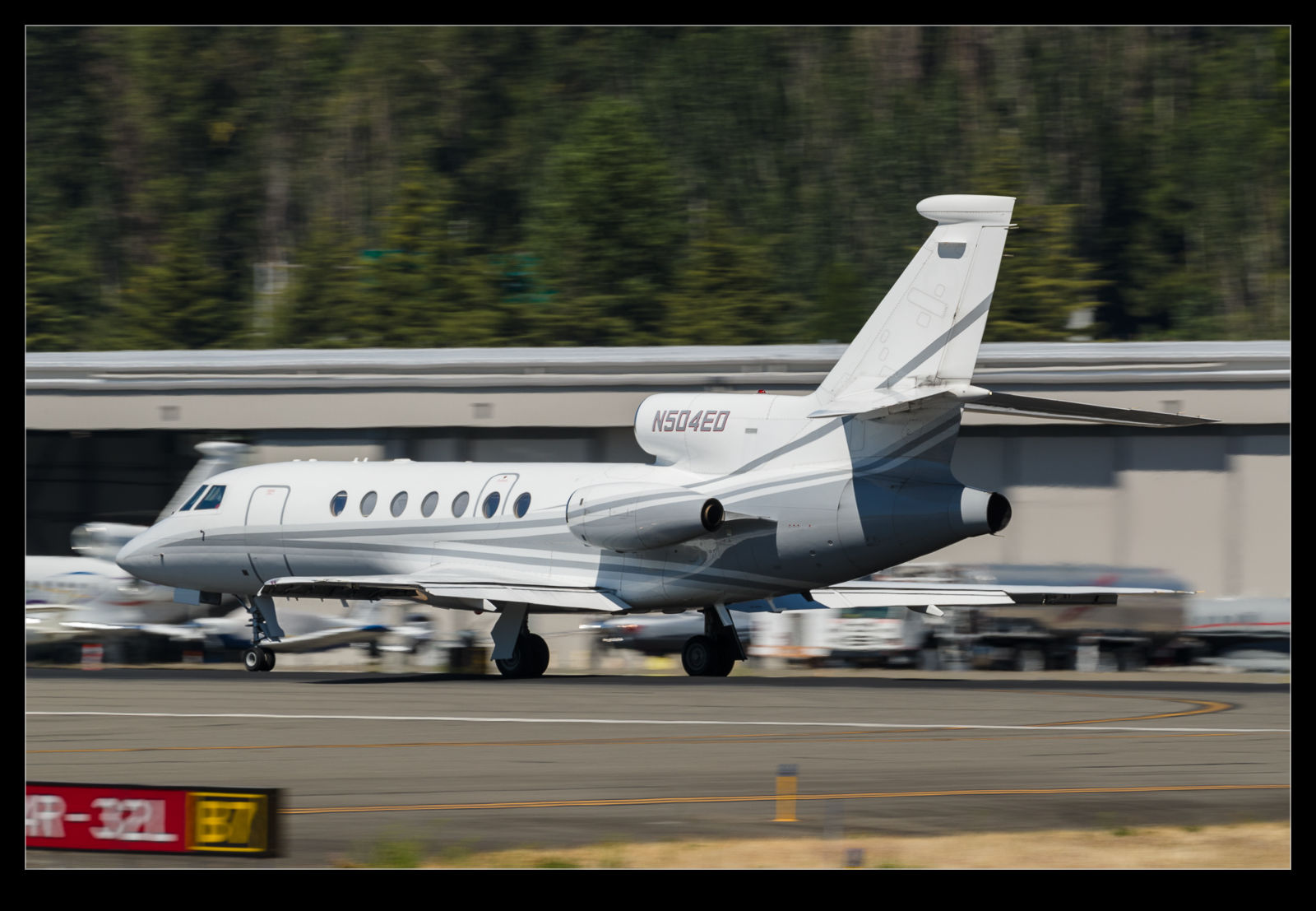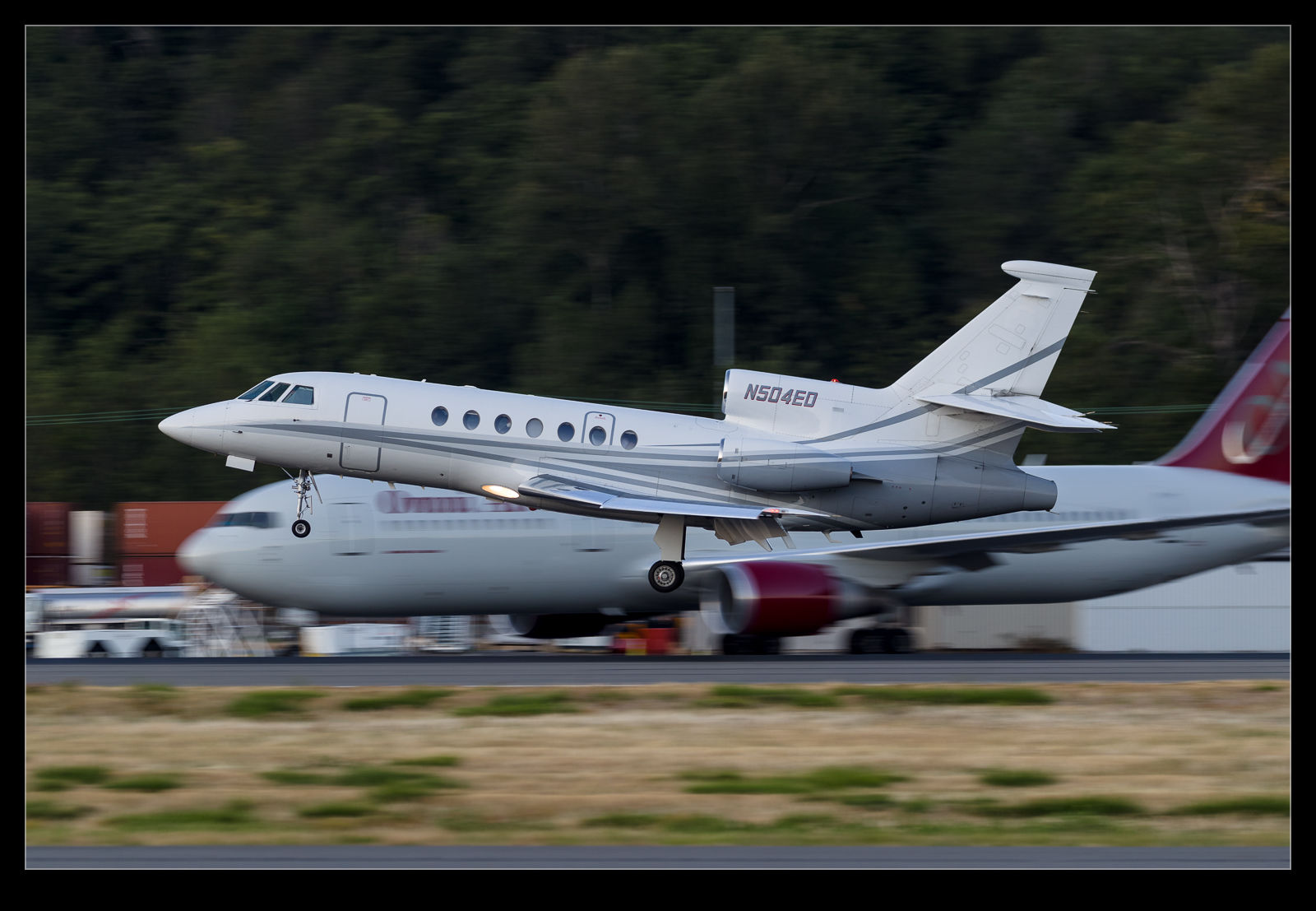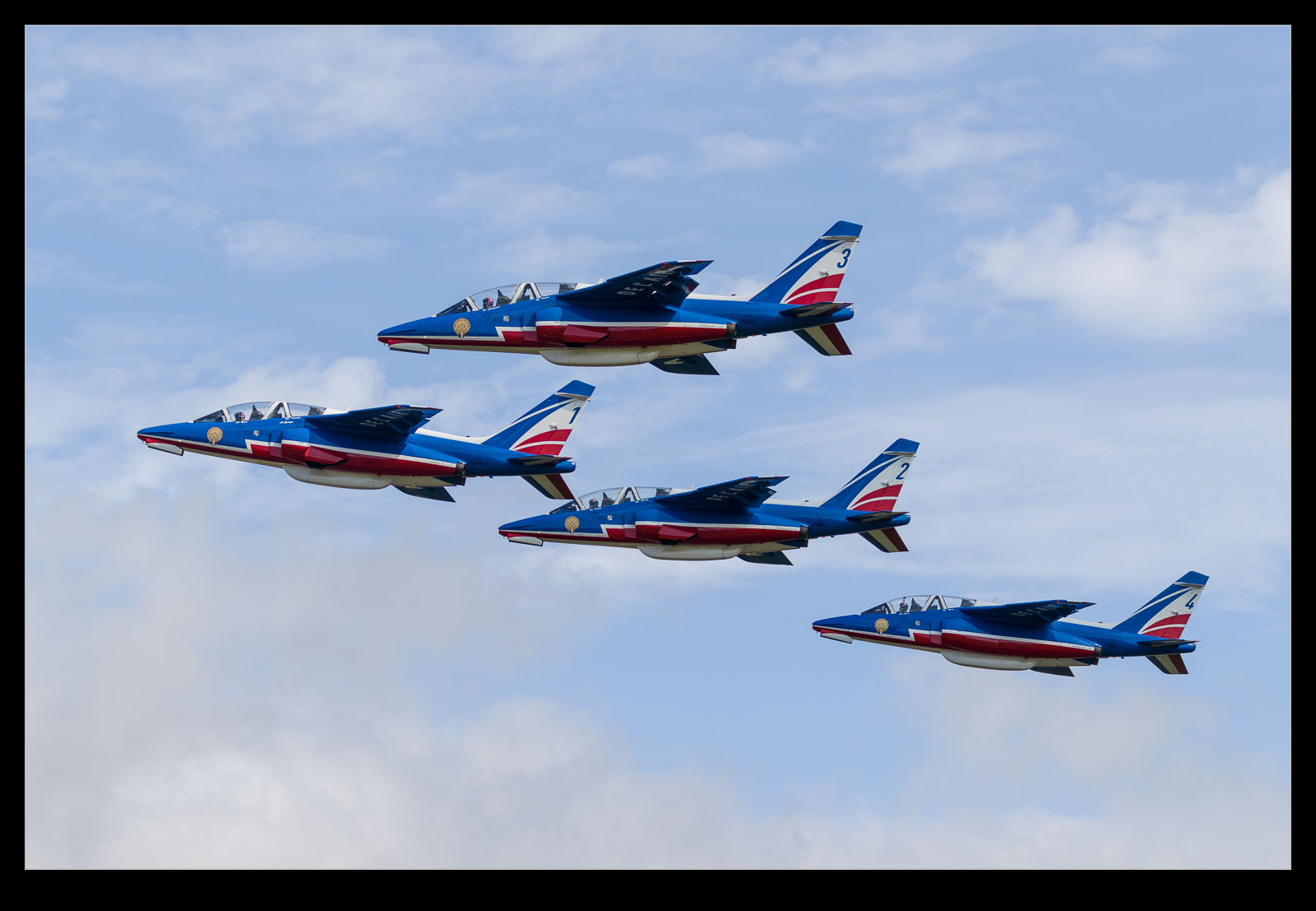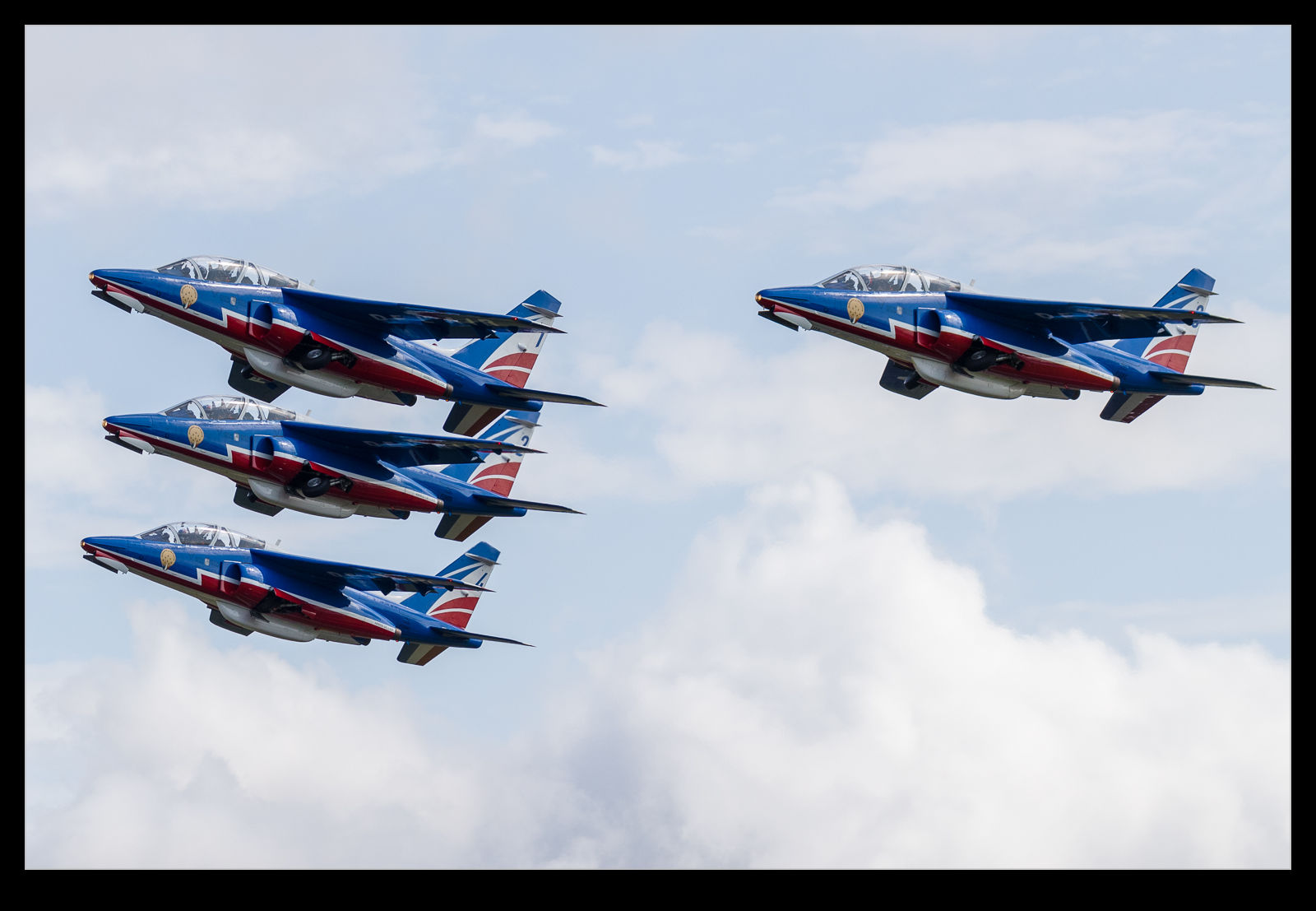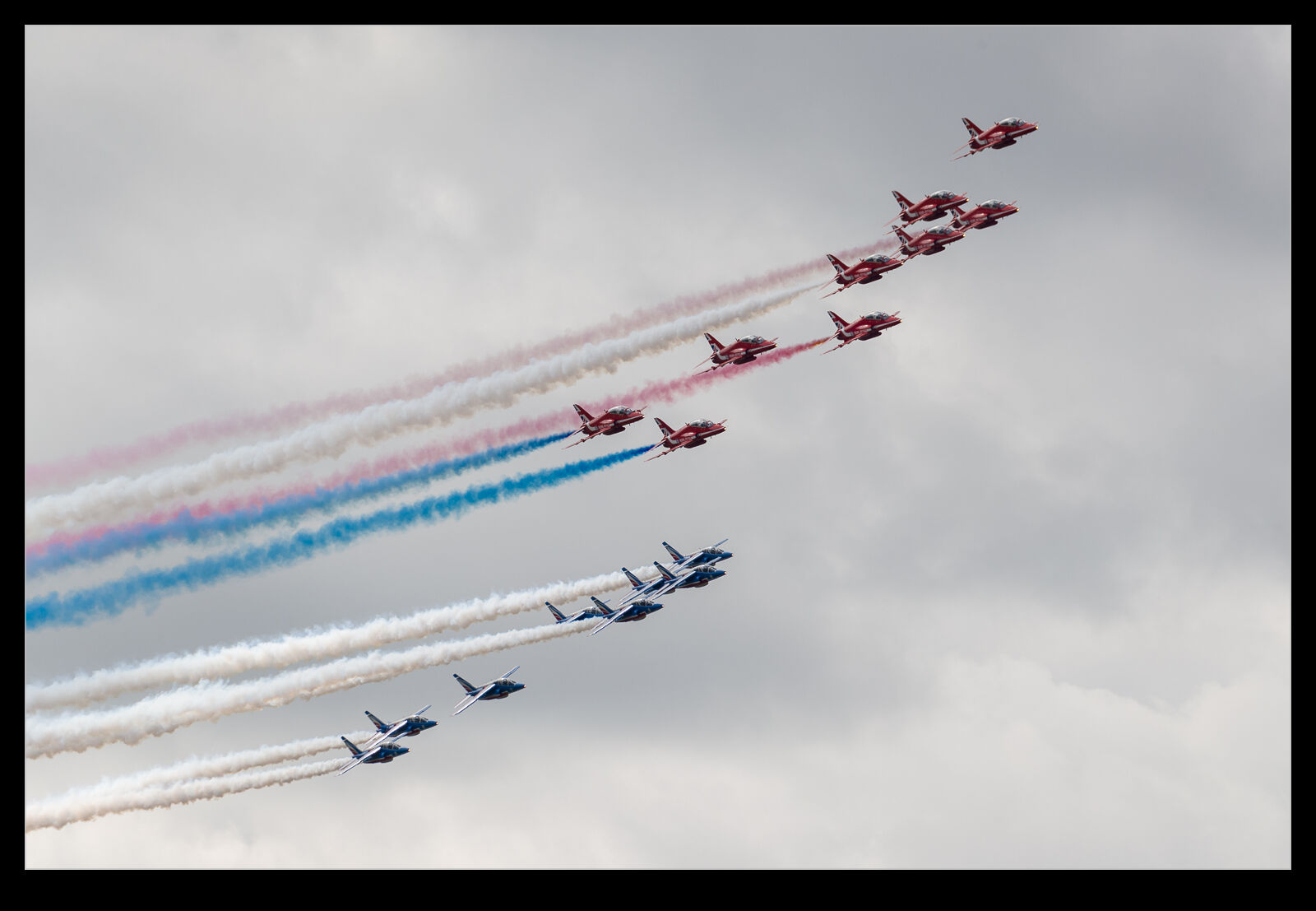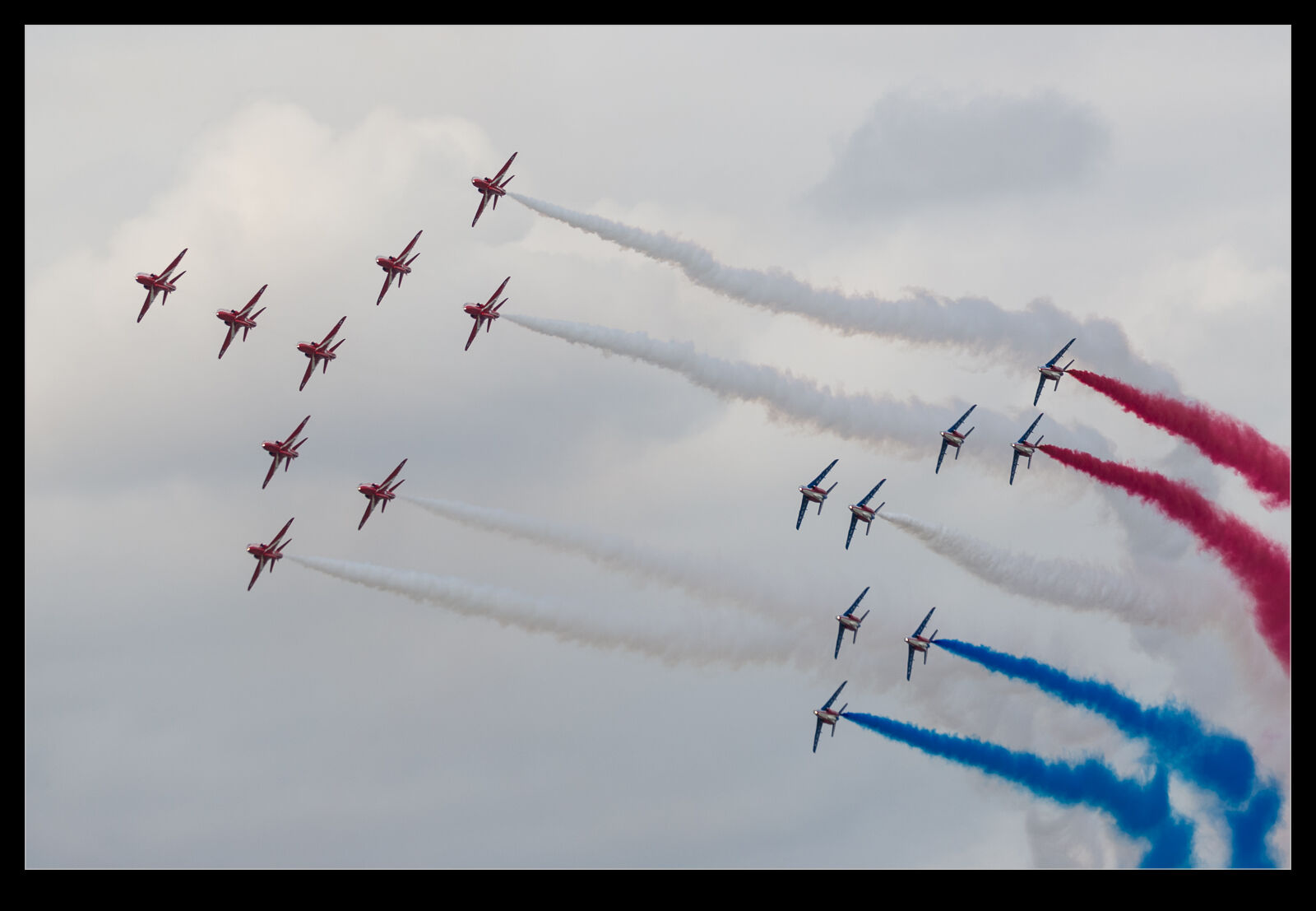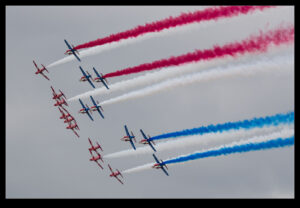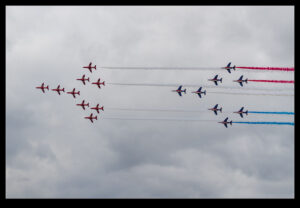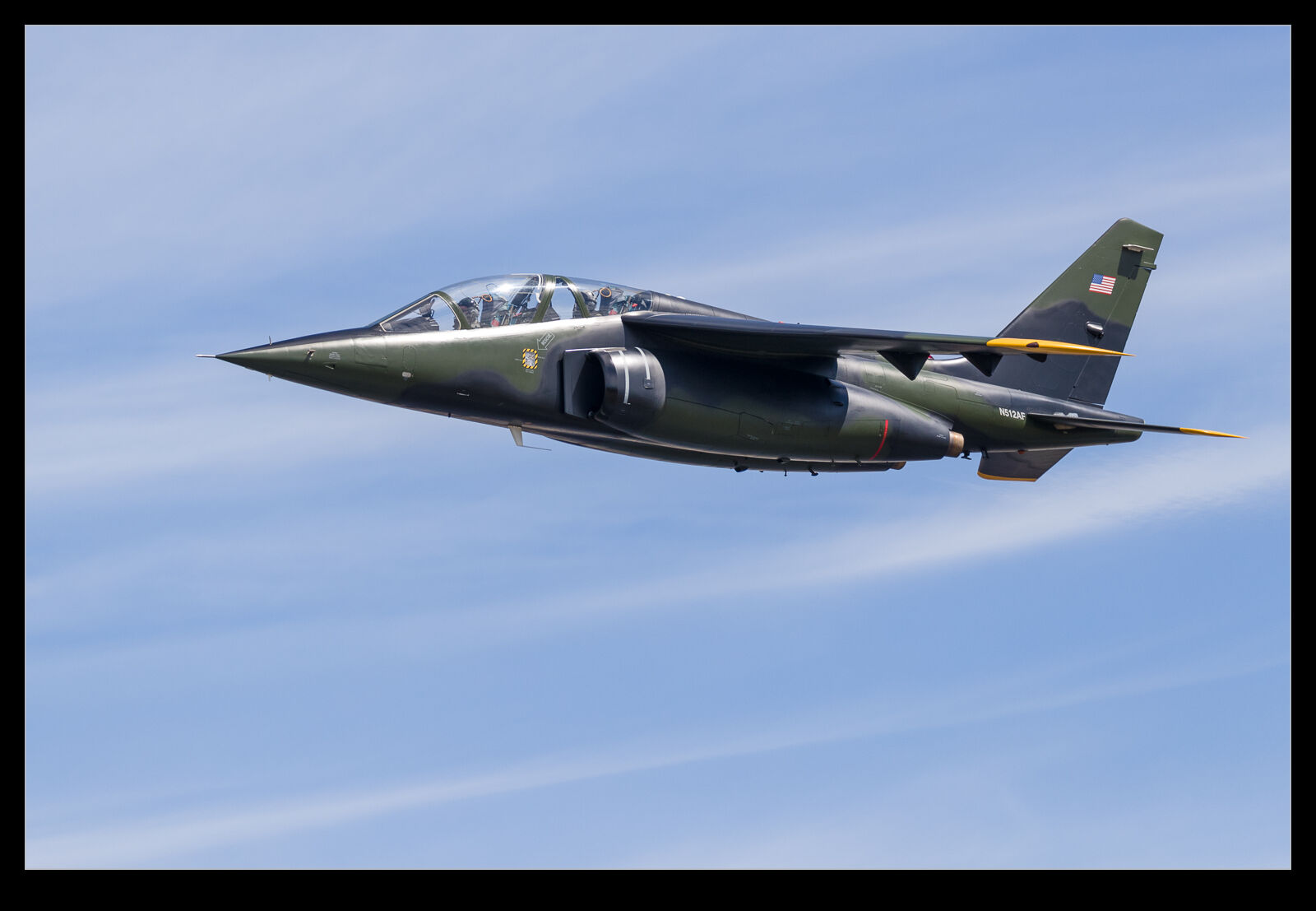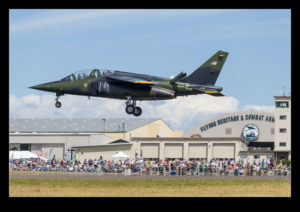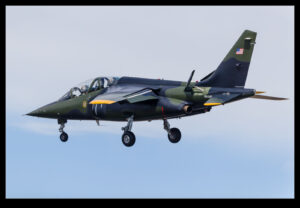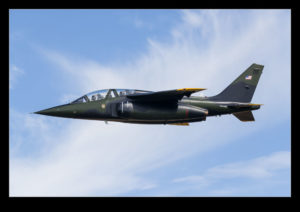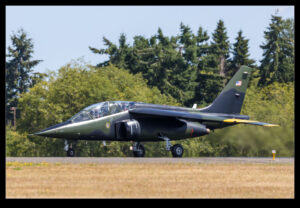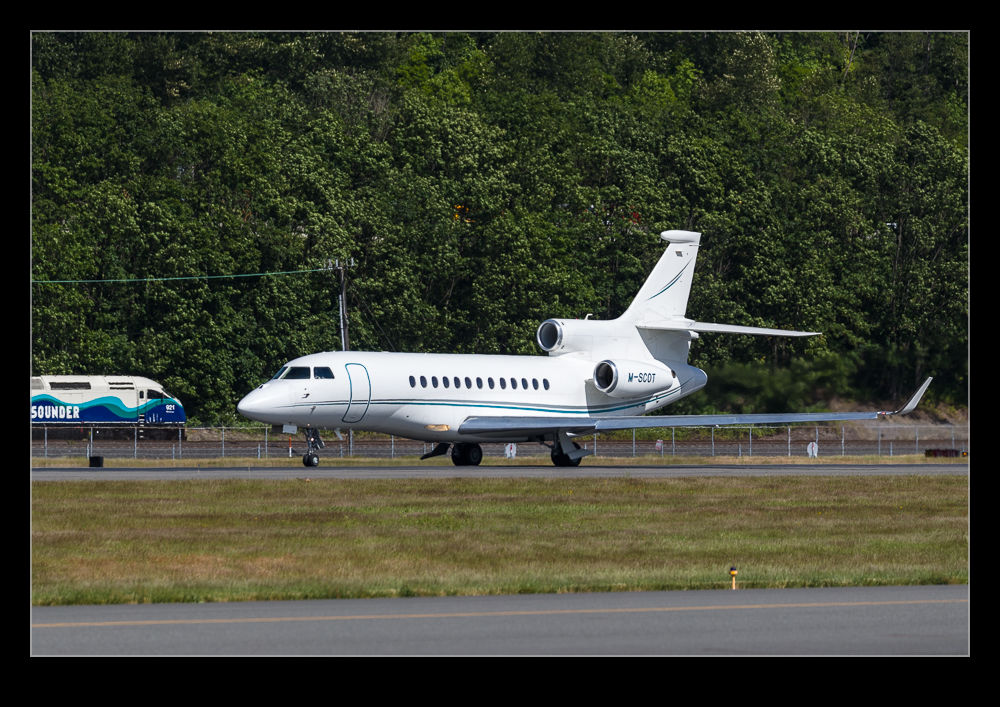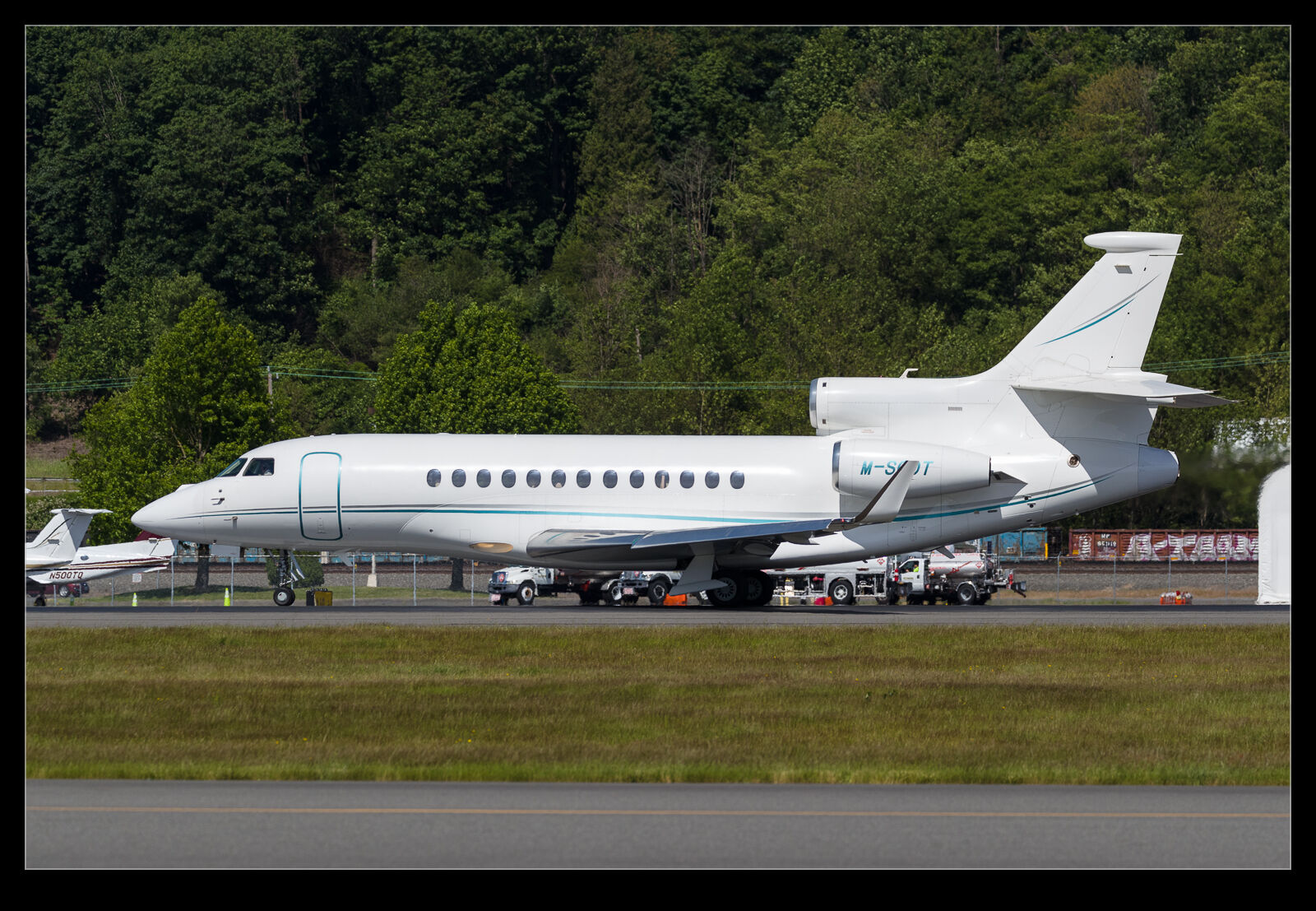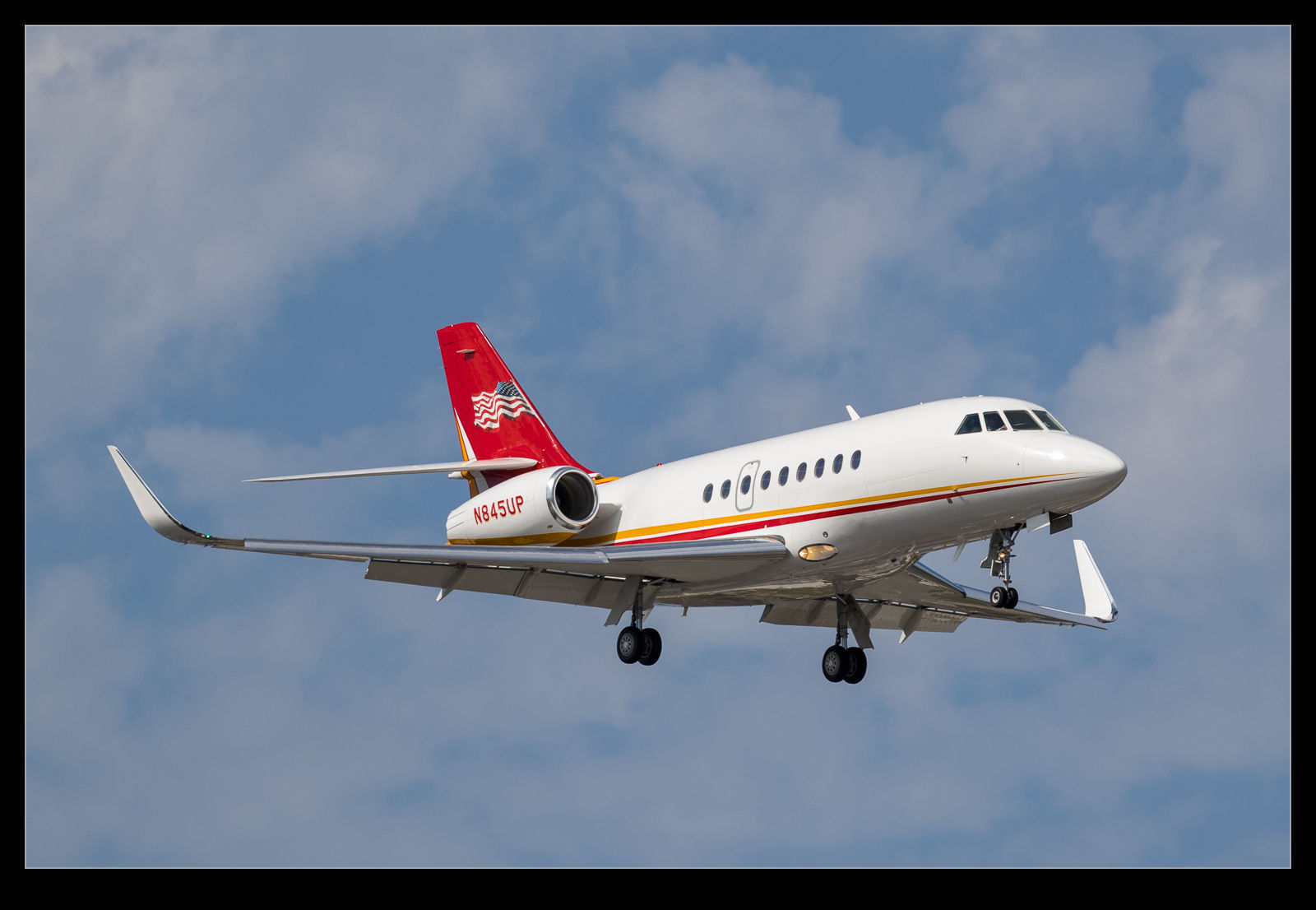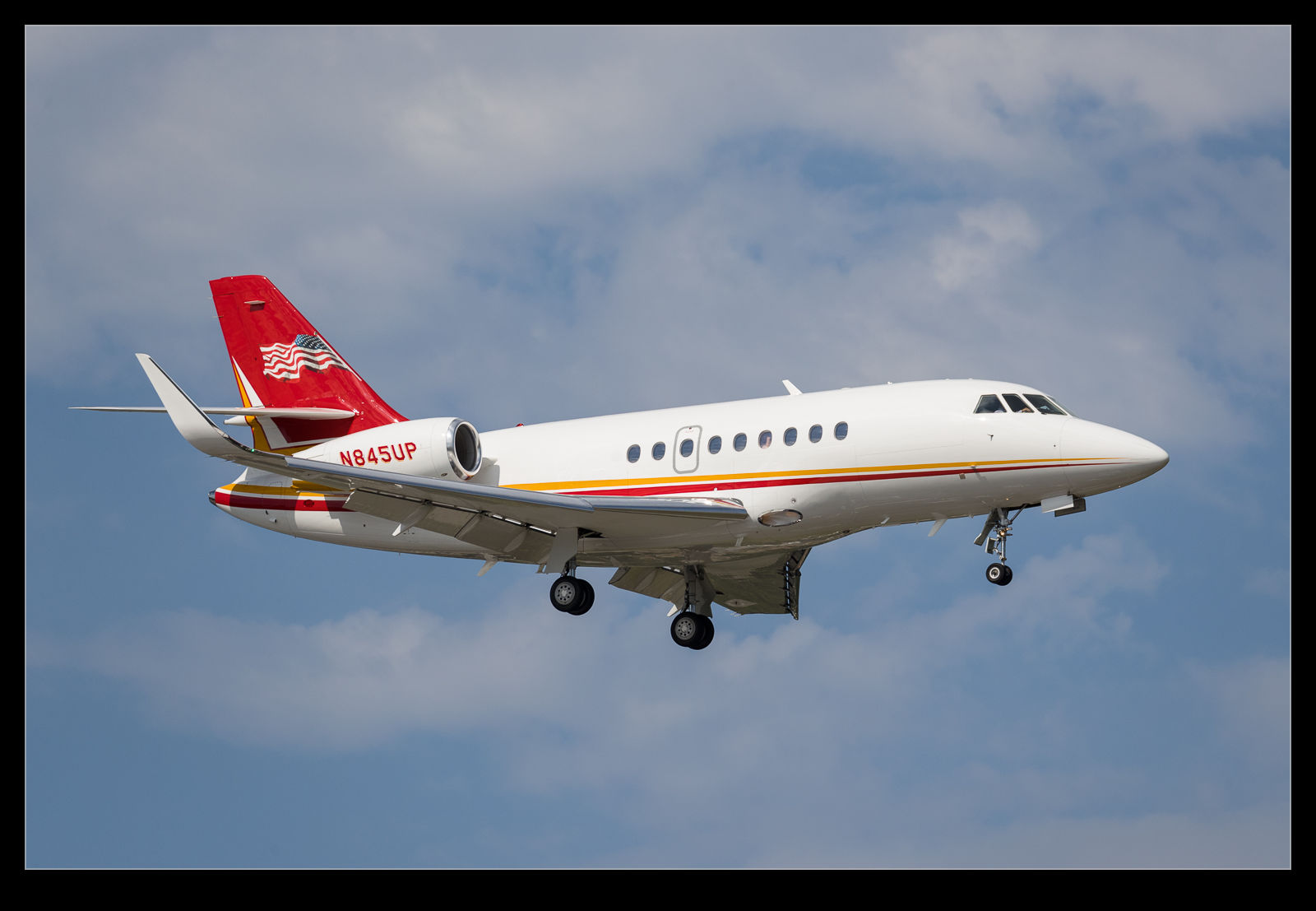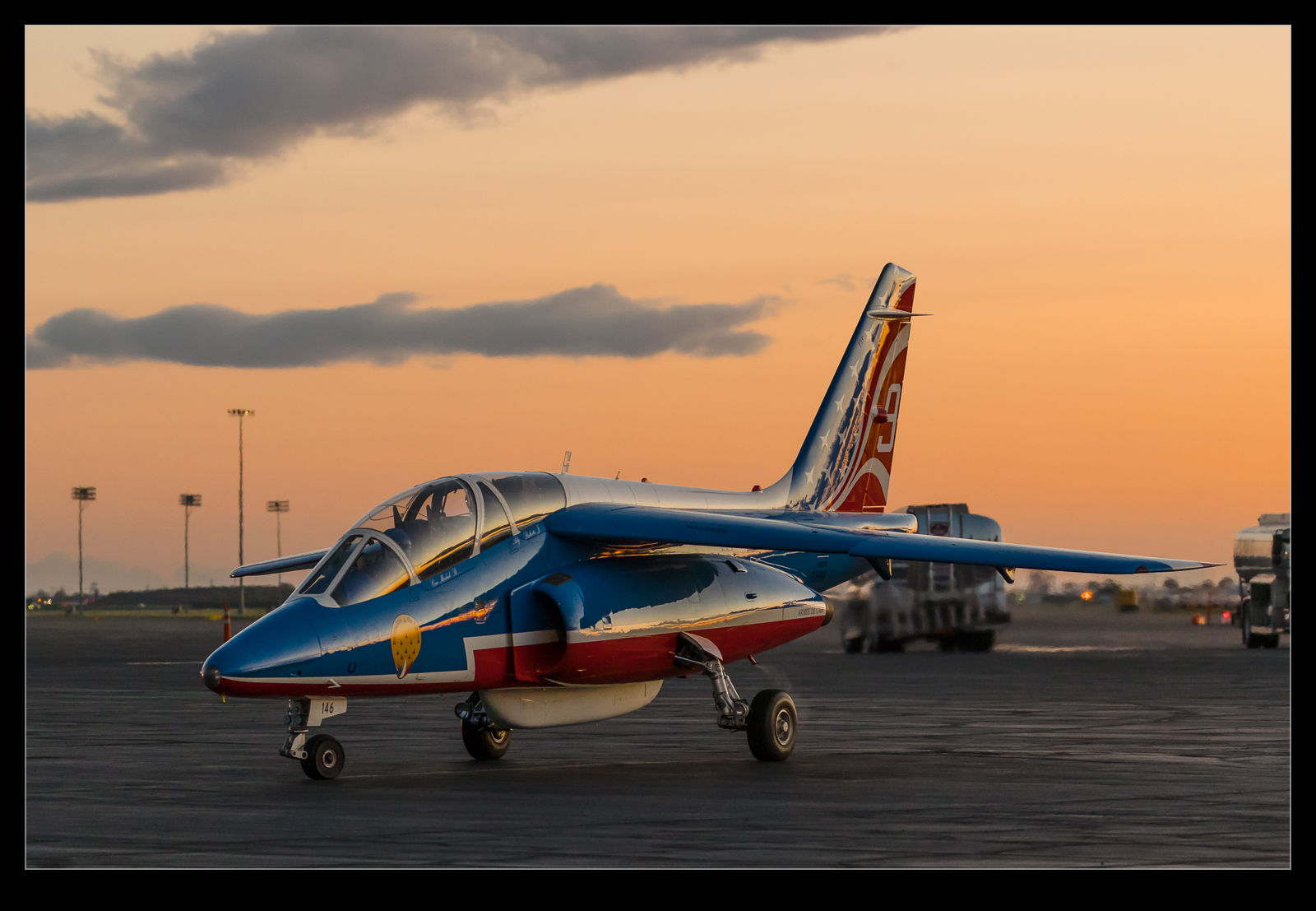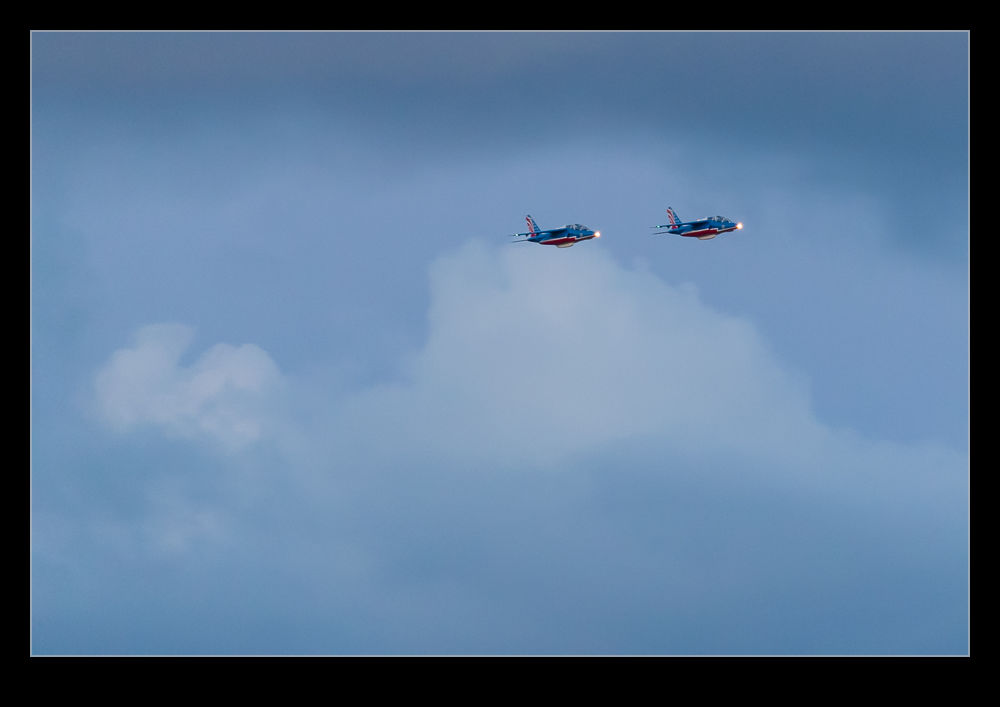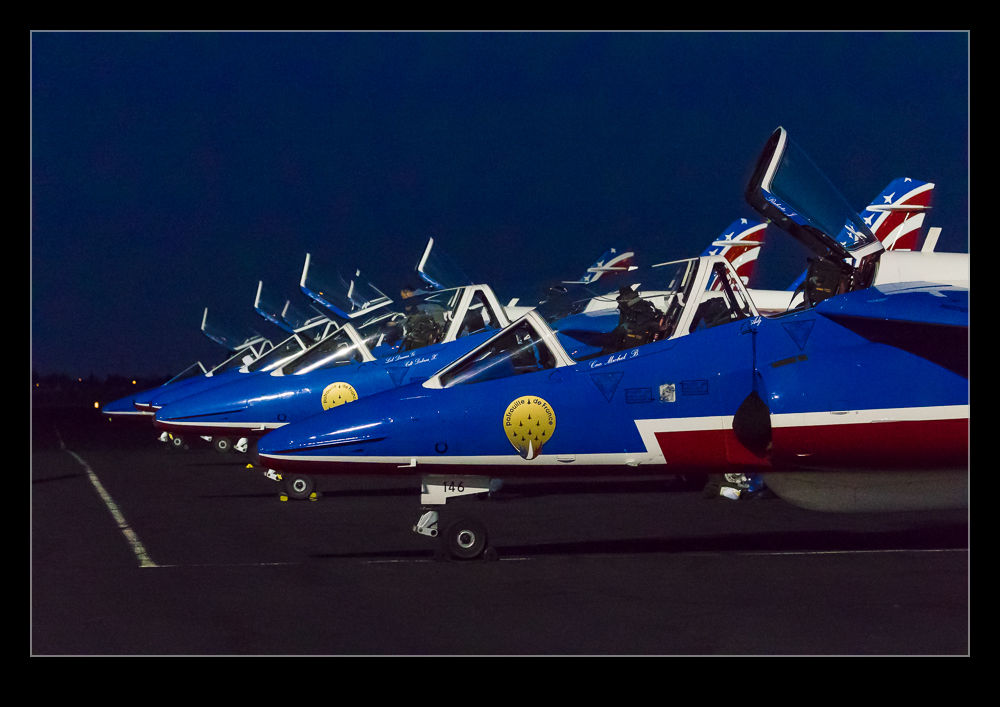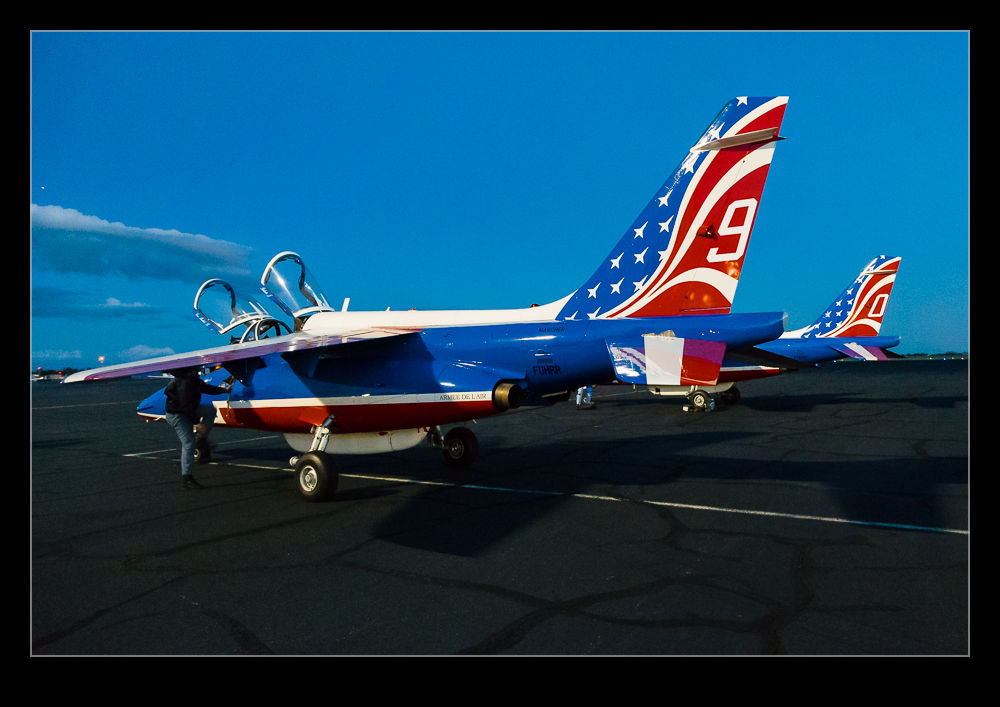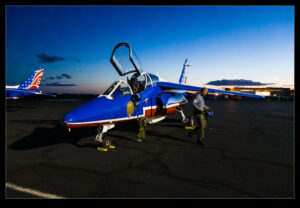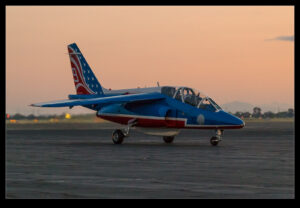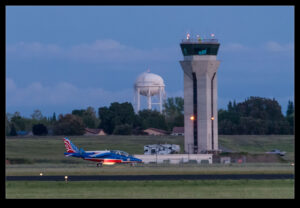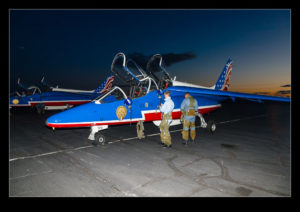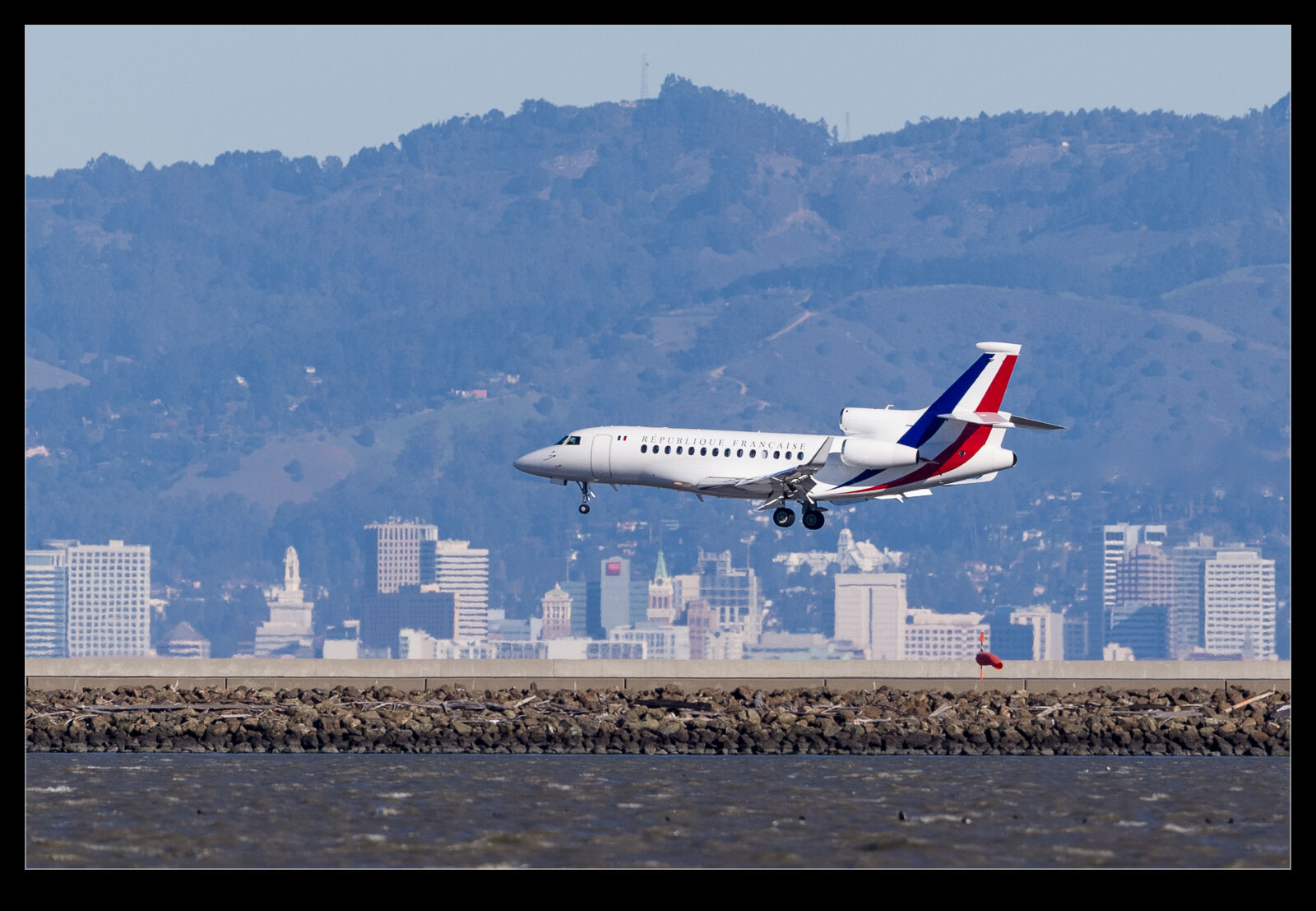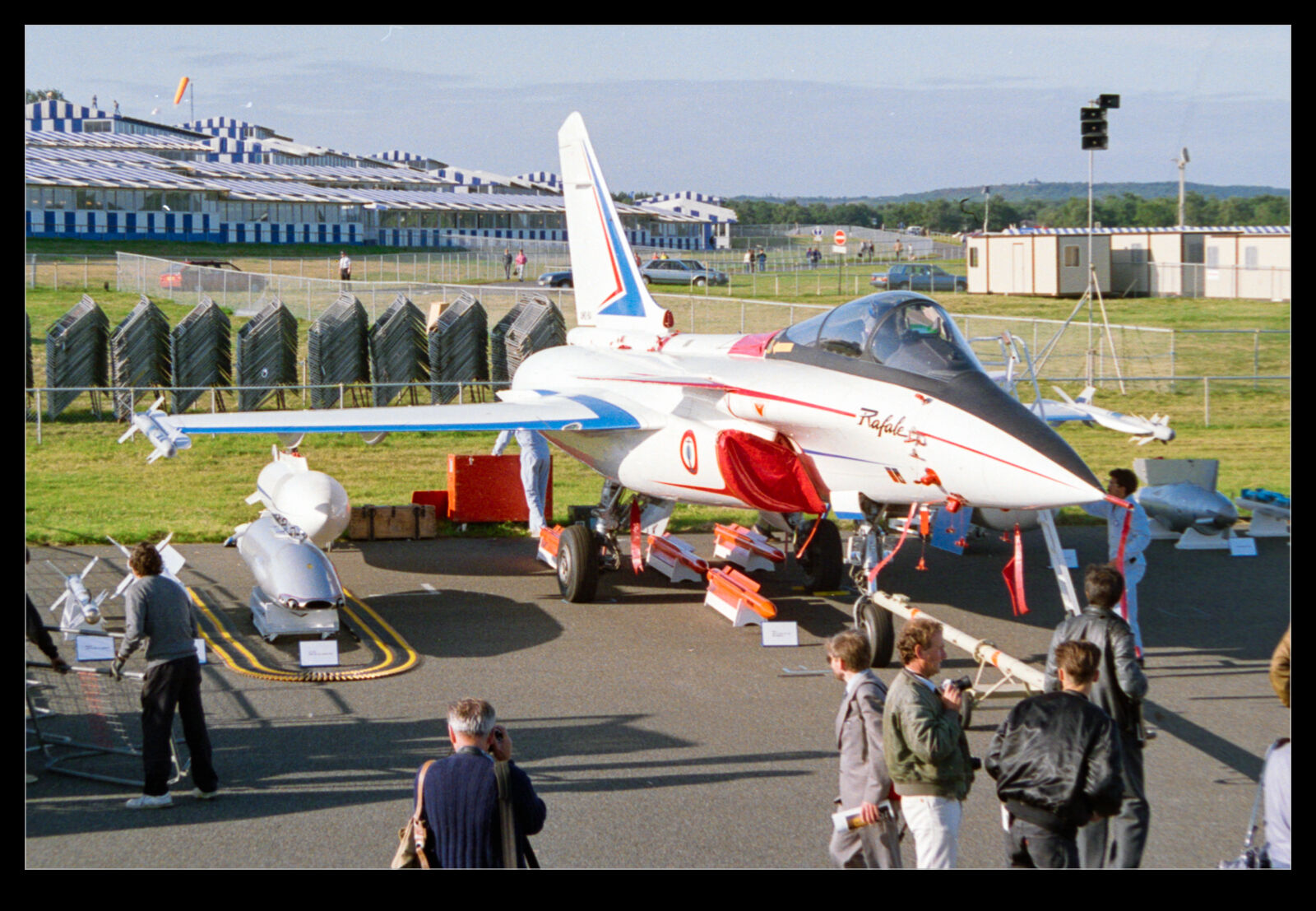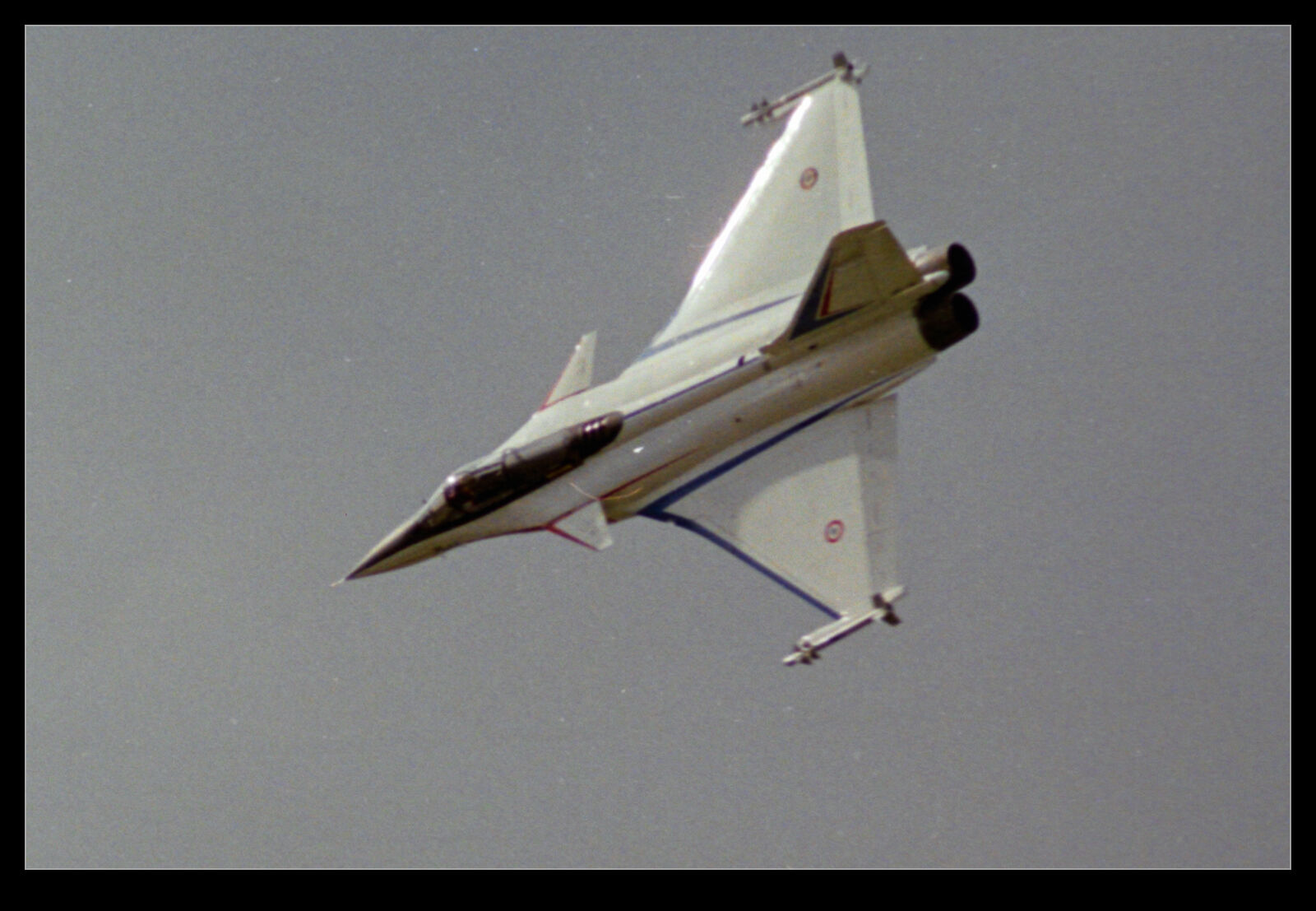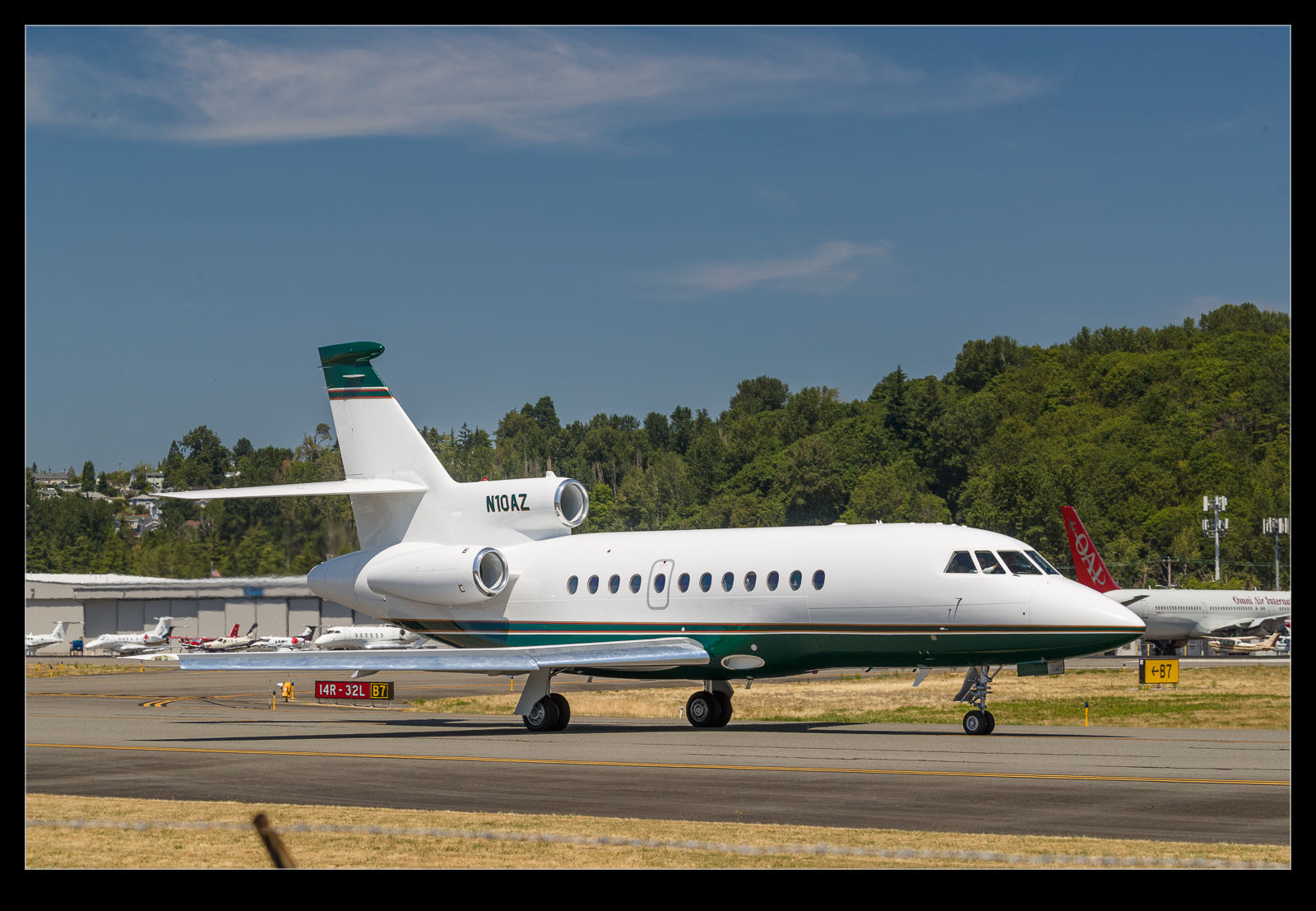 While spending a little time at Boeing Field waiting to see what would be on the move, a Falcon 900 powered up over at the FBO. Most bizjets can taxi from that ramp down to the threshold but there is a limit on the size of aircraft than can use that taxiway to the end. Larger jets have to cross over to our side of the runway and use the taxiway that is close to the parking lot. I hoped that the Falcon 900 was in the class of jets that needed to do that and that they wouldn’t just do an intersection departure instead.
While spending a little time at Boeing Field waiting to see what would be on the move, a Falcon 900 powered up over at the FBO. Most bizjets can taxi from that ramp down to the threshold but there is a limit on the size of aircraft than can use that taxiway to the end. Larger jets have to cross over to our side of the runway and use the taxiway that is close to the parking lot. I hoped that the Falcon 900 was in the class of jets that needed to do that and that they wouldn’t just do an intersection departure instead.
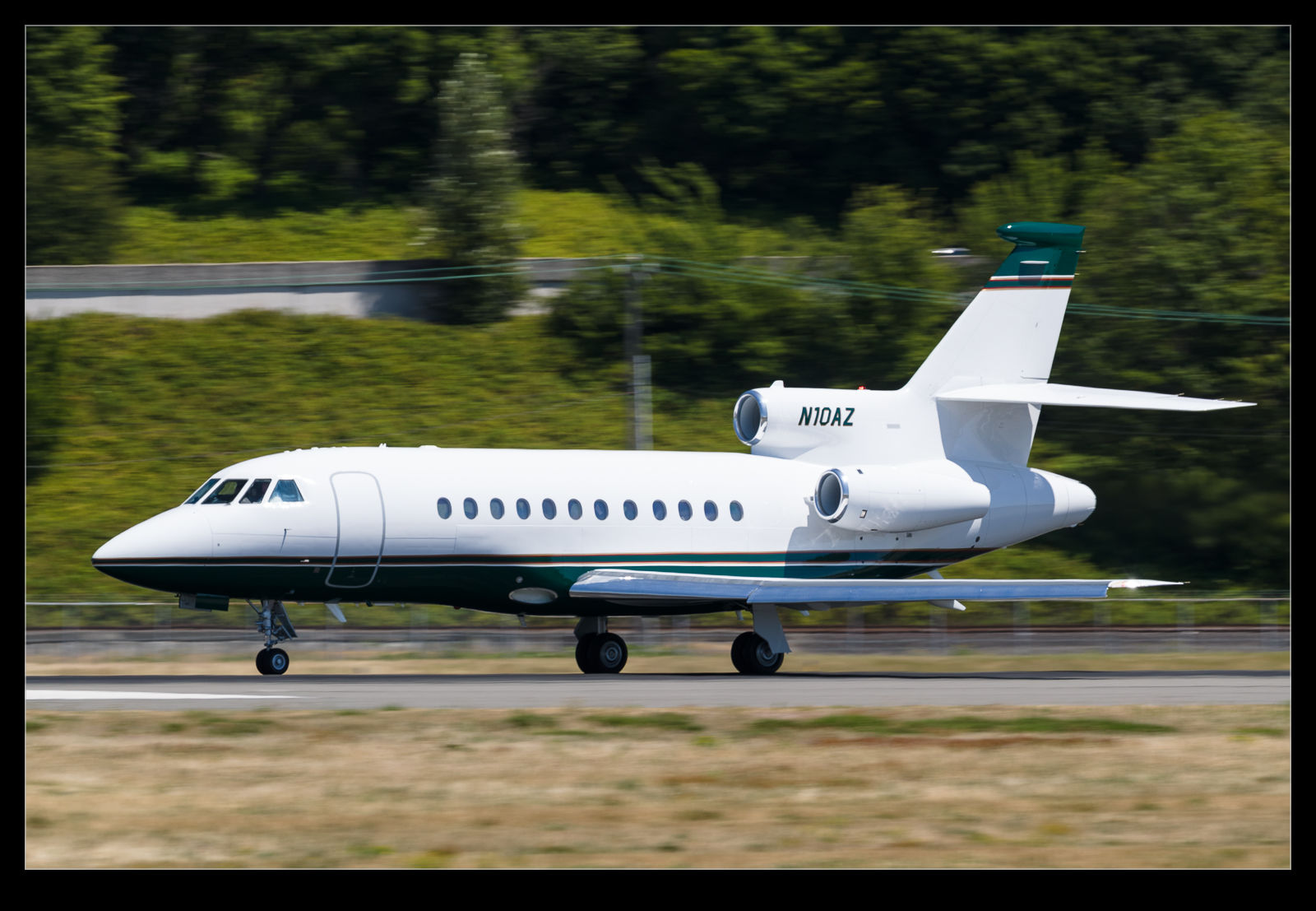 I got lucky and they came my way. I prefer the look of the cockpits on the newer generation Falcons with the multi window configuration dating back to the Falcon 20 looking a little outdated but, putting that aside, the Falcon 900 is a nice looking plane.
I got lucky and they came my way. I prefer the look of the cockpits on the newer generation Falcons with the multi window configuration dating back to the Falcon 20 looking a little outdated but, putting that aside, the Falcon 900 is a nice looking plane.

